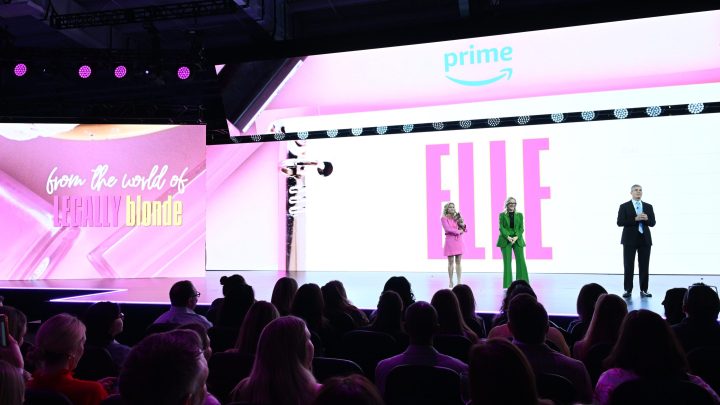
Glitz, glamor and economics at this year’s upfronts

This week, media giants have been gathering in New York City for the upfronts, where TV networks and streaming platforms make their annual pitches as they try to court advertisers by previewing the shows they have lined up for the seasons ahead.
Sure, there have been plenty of splashy announcements at this year’s upfronts, including Amazon Prime Video’s announcement of a “Legally Blonde” prequel series and NBCUniversal’s release of a trailer for the highly-anticipated film adaptation of “Wicked.” But it’s not all glitz and glamour. Ad buyers are also keeping an eye on the Federal Reserve this year.
Parker Herren, a TV reporter at AdAge, is covering the upfronts this week. He spoke with “Marketplace Morning Report” host David Brancaccio about how advertisers are feeling.
David Brancaccio: I saw some data suggesting traditional TV ad buying was gonna go up like a smidgen — 1%. Digital advertising would be up like 32% — a third. Does that track with the vibe that you’ve been seeing at the upfronts this week?
Parker Herren: You know, I think this week at the upfronts, the main theme was that all of the traditional media companies are leaning more and more into their digital assets, because that’s correct, that’s where the growth is going to be from ad investment. Whereas I think even that growth that you’re mentioning in traditional TV might even be a little bit generous. I mean, I’m hearing from my sources that the new saying is “flat is the new up.” And that’s even only for a select few players.
Brancaccio: Oh, my goodness. I remember decades ago when it was all about broadcast TV. It was the top of the pinnacle there. Is it more that broadcast TV is just old school and it’s hard to target ads using the old linear methods? Or is it really that the audience is dwindling to the point that advertisers are like, “Nah, we got to really be focused on digital?”
Herren: Well, it’s even breaking up into more buckets than that. I mean, the growth that probably would come from broadcast TV is in live sports. But then where are those other linear networks, the cable networks are really declining in viewership, the traditional media companies, Disney, NBCUniversal, etc, they are kind of pitching themselves as, not just that you can buy these big audience-based packages where an advertiser’s marketing will be spread across so many different endpoints, just to find the viewers that they’re looking for — rather than focusing on how many viewers are on each individual platform.
Brancaccio: You have to also imagine that advertisers — you know, the people paying the money for the ads — are also looking out to the condition of the wider economy. I mean, the job market is very strong. But I mean, it is also true that in April, retail sales were flat. Did you pick up a cautious vibe about where people might be worried the economy is going?
Herren: Yeah, I think absolutely. And the state of interest rates have a pretty hard impact on some advertiser categories; geopolitics can have an impact on ad spending. So all of the advertisers are keeping their budgets kind of close to the chest and holding out a little bit longer, and what is tricky about that in the upfront market is that, of course, media companies are trying to sell the next broadcast year of their ad inventory. And advertisers don’t really want to do that any more, and it’s becoming harder and harder to convince them that this is a model that still works when there are so many new ways to buy TV through automated and programmatic platforms that really don’t have the limited inventory that you would hear about from decades ago, when advertisers were fighting to get the best ad slot in “Friends” or “American Idol” or something like that. That just doesn’t really exist anymore outside of a few select inventory.
There’s a lot happening in the world. Through it all, Marketplace is here for you.
You rely on Marketplace to break down the world’s events and tell you how it affects you in a fact-based, approachable way. We rely on your financial support to keep making that possible.
Your donation today powers the independent journalism that you rely on. For just $5/month, you can help sustain Marketplace so we can keep reporting on the things that matter to you.











